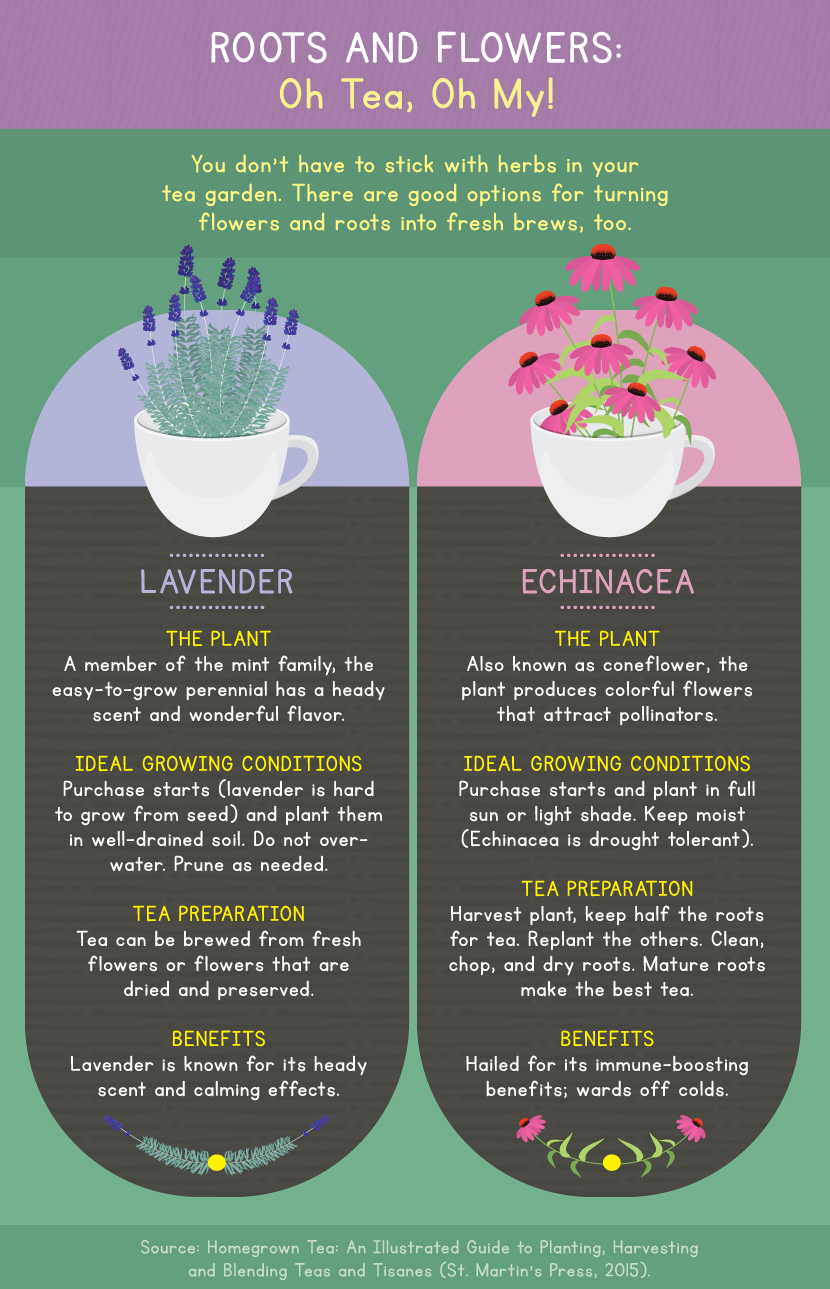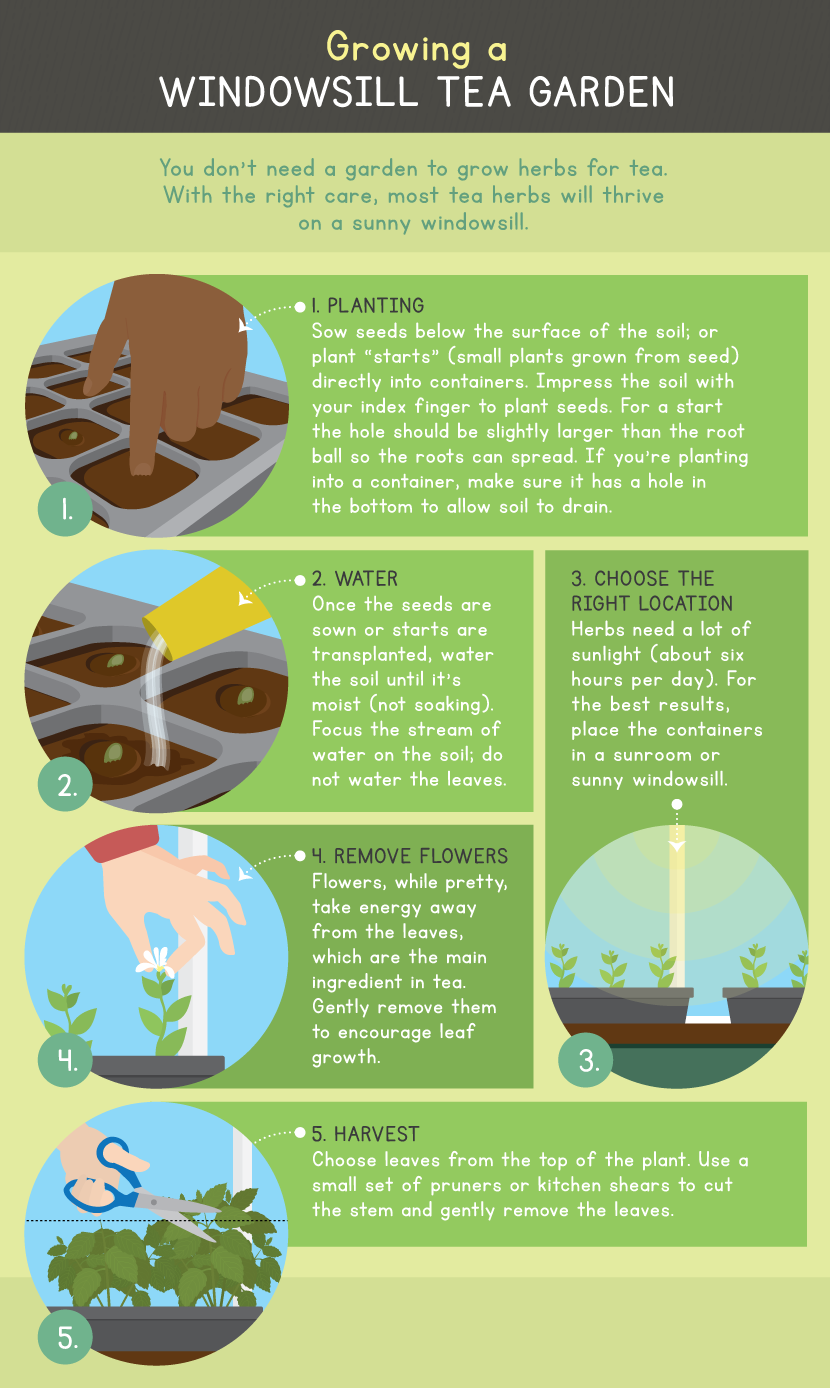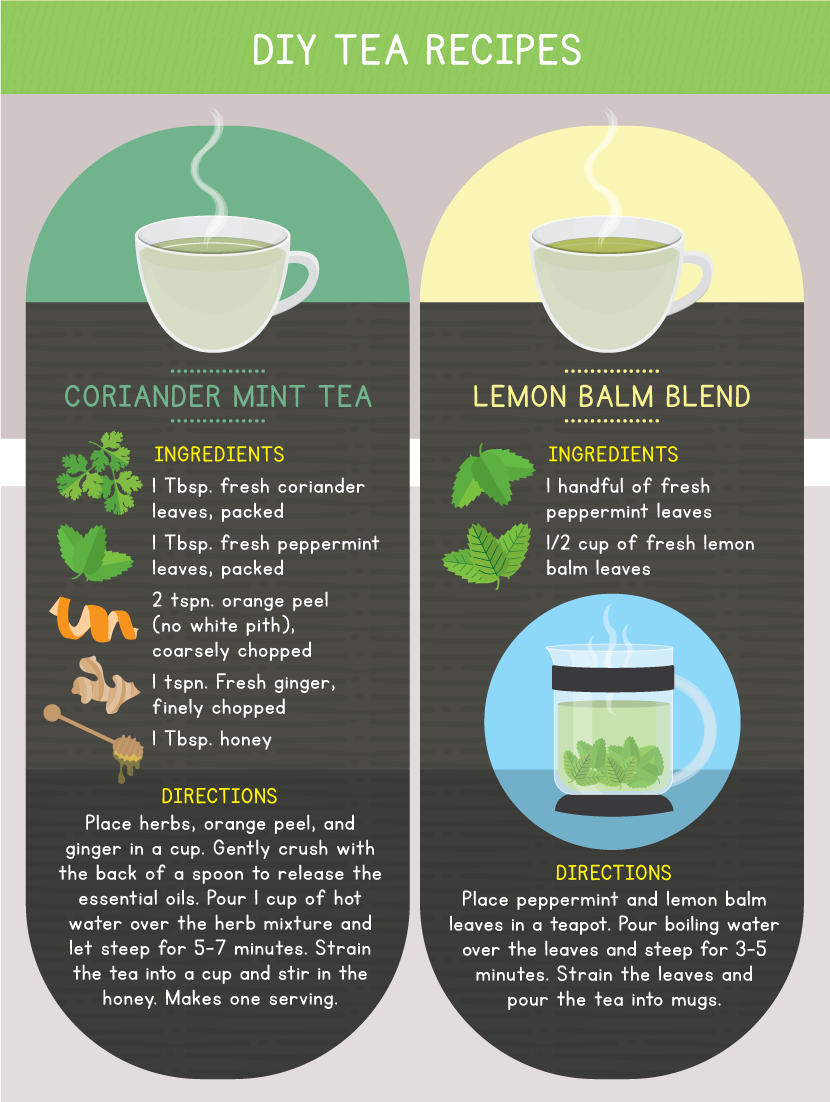Grow a Tea Garden
Turn Your Garden into a Mini Tea Plantation
The next time you brew a cup of tea in the morning for a quick pick-me-up, use an herbal blend to ease digestive upset, or wind down with a steaming mug before bed, skip the supermarket tea bag and instead make a piping cup of tea using ingredients from your own tea garden.
Flavorful teas can be brewed from herbs such as chamomile, lemon balm, basil, and peppermint. The process of making a DIY cuppa is often as simple as steeping fresh herbs in boiling water and sipping.
No garden? No problem. You can plant herbs in small containers sitting on patios or windowsills for a mini indoor tea garden.

Planting a tea garden provides instant access to fresh, flavorful herbs and allows you to get creative, mixing different plantings to create one-of-a-kind blends.
There is another benefit to growing herbs for your own hyperlocal brews: Supermarket tea blends are made from dried herbs and often sit on the shelves for months; teas brewed from fresh herbs make stronger, more flavorful teas.
Popular Plants
Peppermint (mentha piperita): This fragrant herb has a robust mint flavor that is a standout as an herbal tea. Peppermint is a perennial that will tolerate full sun and high temperatures. It needs to be watered often to keep the soil moist. While it’s hailed for its fresh flavor, peppermint is also used to soothe an upset stomach and aid in digestion. It also has a numbing effect that is effective for treating headaches, depression, and anxiety.
Chocolate mint (Mentha piperita cv.): Despite its name, this perennial herb doesn’t taste like chocolate. Instead, the herb has a strong peppermint flavor (similar to mint flavor in peppermint patties). Like all herbs in the mint family, chocolate mint spreads rapidly and can take over a garden bed. To keep it from choking out other herbs, plant it in a container. It prefers full sun and moist soil.
Lemongrass (cymbopogon citratus): A tender perennial that looks like clumps of tall grass, lemongrass is best known as a fragrant addition to Asian dishes. It’s used to ward off colds and the flu and to aid in digestion. The herb prefers full sun and hot temperatures. The blades of the plant are sharp, so it’s essential to strain the tea well to avoid swallowing any pieces of the plant.
Lemon balm (Melissa officinalis): The name is a little misleading. While the perennial herb, also known as bee balm, has a slight lemon scent and citrus flavor, it’s a member of the mint family. Lemon balm spreads like mint plants, making it best confined to a container where it won’t take over the garden. It should be planted in full sun and watered often. To keep it from spreading, cut back the leaves on a regular basis. Lemon balm is used to reduce stress and anxiety and promote sleep. It loses much of its flavor after it’s dried, so lemon balm is best brewed from fresh leaves.

German chamomile (Matricaria recutita): Hailed as an herb that causes sleepiness and calms chest colds, headaches, and sore throats, chamomile is one of the most popular herbs used in teas. It’s a fast-growing annual herb that thrives in full sun. The herb is as ornamental as it is practical, producing flowers that resemble daisies and smell like green apples. To create herbal tea, the flowers need to be cut and dried. The process can be time-consuming but well worth it for a flavorful cup of tea.
Holy basil (Ocimum sanctum): In India, it’s called Tulsi, which means “the incomparable one,” and is known for alleviating digestive upset, relieving stress, and calming colds. Unlike traditional Italian basil, this tender perennial is much more aromatic and has a sweet flavor. It grows best in hot temperatures and drier soil (if basil is watered too often, it will rot). The flavor is at its most pungent when the leaves just start to bud.
Cilantro (Coriandrum sativum): This cool weather annual grows best in the spring (or indoors, in a pot placed on a sun-drenched windowsill). Cilantro is best known as an ingredient in salsa. But this herb has a fresh, crisp flavor that can be used to make a refreshing cup of tea. It’s used as an antioxidant and also relieves anxiety and digestive upset.
Tea Tips
Before planting a tea garden and attempting to make your first mug of fresh herbal tea, follow these tips:
Contain the Plants
The perfect tea garden might not be grown in a traditional garden at all. Instead, gardeners often grow herbs in containers to ensure each plant has the space it needs to reach its full size and accommodate its individual watering needs. Growing herbs such as mint in containers also prevents the plants from spreading and taking over the garden. The downside: most herbs won’t survive the winter in a container outdoors, especially in colder climates. But containers can be brought inside, where herbs will grow in a sunny window.
Harvest Early
To seal in the flavor, cut herbs first thing in the morning. Use a sharp pair of shears to clip the leaves after the dew has dried and before the sun gets too hot (which draws out the natural oils that give herbs their flavor). Instead of letting herbs grow wild, harvest them often. Each time you snip a few sprigs or a handful of leaves, it serves as an informal pruning.
Dry Herbs Naturally
You can keep sipping the fruits of your labor all winter long by drying fresh herbs harvested in the summer. Lay the leaves on a towel in the hot sun until they turn crispy. The leaves should be dry enough to crumble. If there is any moisture left in the leaves, they will mold. Once the leaves are dried, store them in a glass jar in a cool, dry place.

Have Fun
Making herbal tea comes down to experimentation. Start with the basic herbs and experiment with different brews. While mint, lemon balm, and chamomile are considered “safe” herbs that won’t interact with medications or supplements, it’s a good idea to check with a health care professional (such as an herbalist) about possible herb-drug interactions before making DIY blends.
Embed the article on your site

